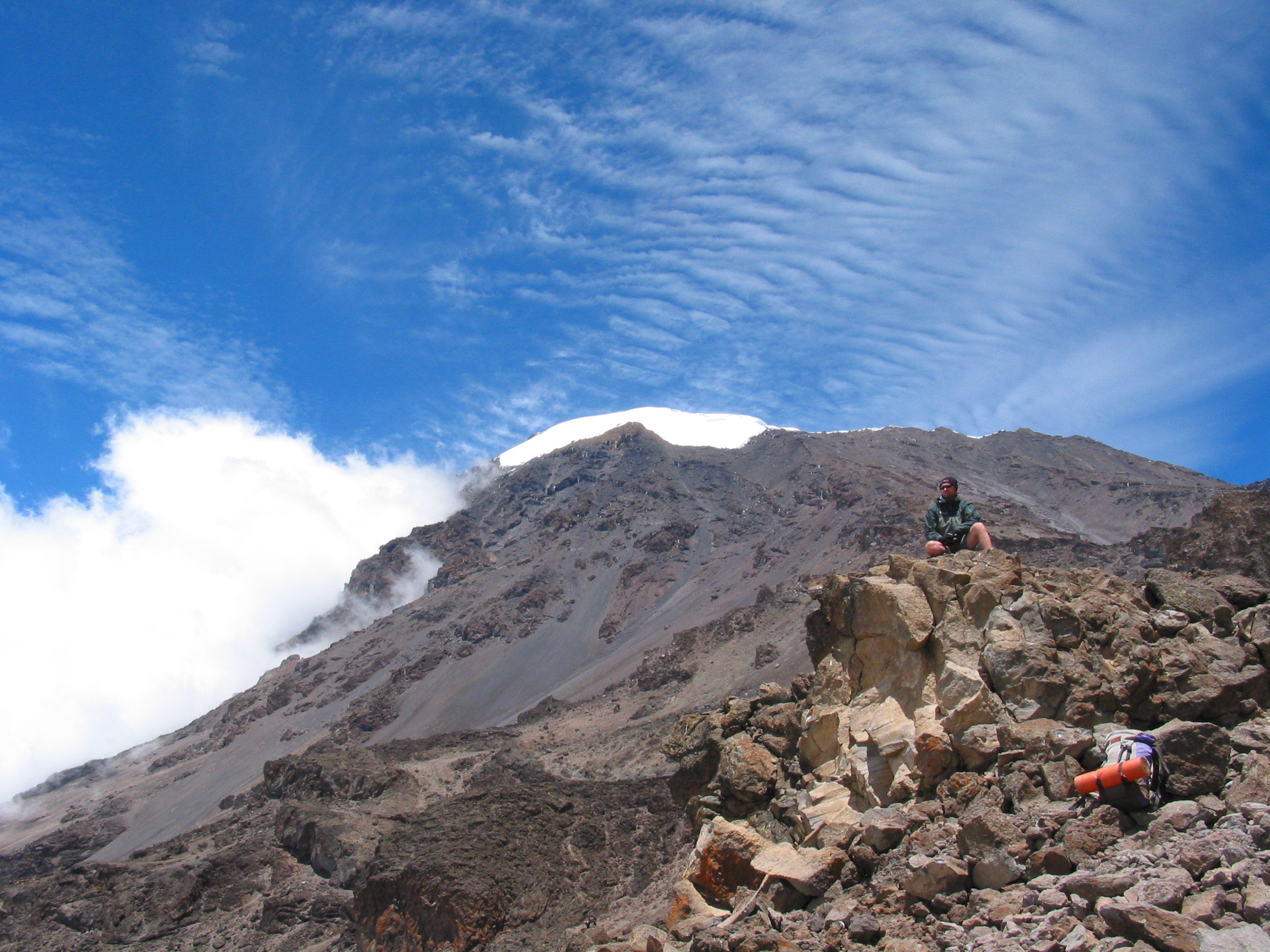International:
North America:
Menu

International:
North America:
- Home
- Kilimanjaro Climb
- Kilimanjaro Planner
- Other Treks
- About Us
- Dates + Prices + Booking
- Contact
International:
North America:

International:
Kilimanjaro, Africa’s tallest peak, stands like a dark island in a sea of clouds, with its snow summit shimmering in the equatorial light. But don’t let its serene appearance fool you; succeeding on Kilimanjaro is no walk in the park. From the lush rainforests at its base to the icy expanses of its summit, every step is a battle against the elements and the limits of your endurance.

As the altitude creeps higher, so does the challenge. Altitude sickness is always in the back of your mind, lurking in the shadows, waiting to creep up on you at any moment. For most, nausea, headaches, dizziness and fatigue become constant companions as climbers ascend into the thinning air. Acclimatization is crucial, requiring climbers to proceed slowly and allow their bodies time to adjust to the reduced oxygen levels. A longer climbing route is the only surefire way to keep altitude sickness at Bay. The longer the better.
But altitude isn’t the only challenge climbers must face. Kilimanjaro’s weather is truly unpredictable, capable of changing in an instant. It can turn from sunshine to snowfall in the time it takes to put on your poncho. One moment, the sun beats down mercilessly, and the next, dark clouds gather on the horizon. Storms can roll in suddenly, unleashing torrential rain, fierce winds, and even snow and blizzards at higher elevations.
Navigating these weather patterns requires adaptability and resilience. Climbers must be prepared for anything, packing layers of clothing, waterproof gear, and sturdy boots to withstand the mountain’s whims. It’s a constant battle against the elements, with no room for complacency. When planning your climb you can educate yourself by going to Tusker Trail’s Live Kilimanjaro Weather web page.
Choosing the right route is crucial in mitigating the difficulty of altitude adjustment. Each route presents its own set of obstacles and considerations, however the longer routes allow your body more time to adjust to the altitude. Factors like trail length, difficulty, and scenery must be weighed carefully, with safety always taking precedence. And choosing the right climbing company is another. Check out some of the better Kilimanjaro routes here.
The discrepancy in guide quality can have a profound impact on a climber’s experience. Those who opt for reputable companies can expect a smooth and safe journey. Their guides are not only skilled with many years of experience and training, but also attentive to climbers’ needs, making the ascent as safe and comfortable as possible.
At one end of the spectrum, there are outstanding companies like Tusker Trail, the foremost Kilimanjaro climb company that provides top-tier services, employing expert guides who ensure climber safety and comfort. On the other end, there are substandard operators that compromise safety, environmental ethics, and overall enjoyment. Climbers who choose lesser-known or poorly rated companies may encounter a range of issues. These can include inadequate equipment, inferior food and accommodation, and guides who lack the expertise to handle emergencies. Such experiences can lead to disappointment, and even danger, for both foreigners and local porters.
For every climber who reaches the summit, there are countless others who are forced to turn back. Whether due to altitude sickness, injury, or simply the harsh realities of the mountain, not everyone who attempts to climb Kilimanjaro will succeed. Yet, even in failure, there are lessons to be learned.
Climbing Kilimanjaro is a test of grit and endurance, a battle against the elements and the inner demons that lurk inside of you. It’s a journey that pushes climbers to their limits, both physically and mentally, demanding nothing less than their absolute best. And for those who dare to undertake it, the rewards are immeasurable—a newfound sense of strength, resilience, and accomplishment that will last you a lifetime. It also creates a well of strength from which you can drink forever.
READY FOR ADVENTURE?